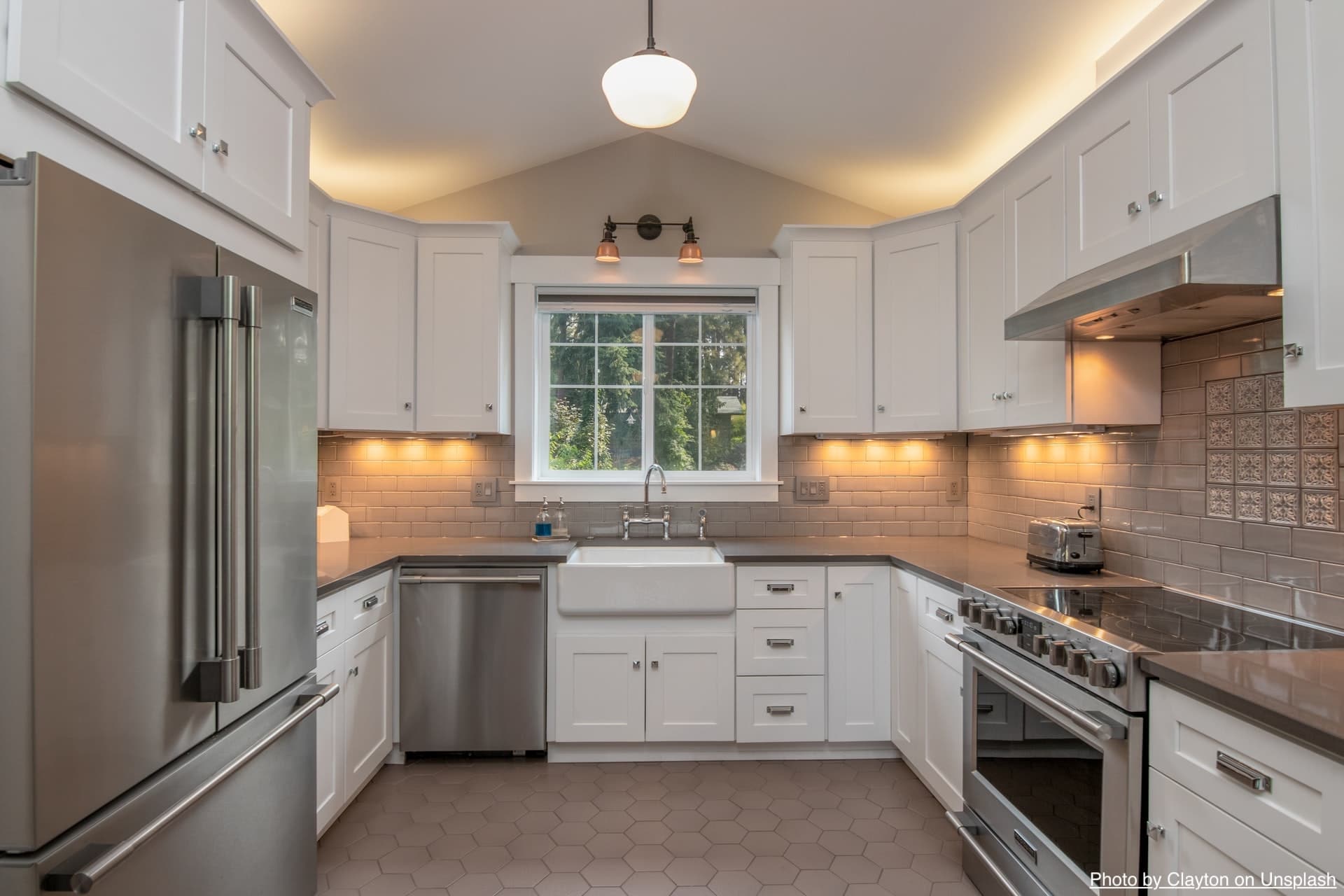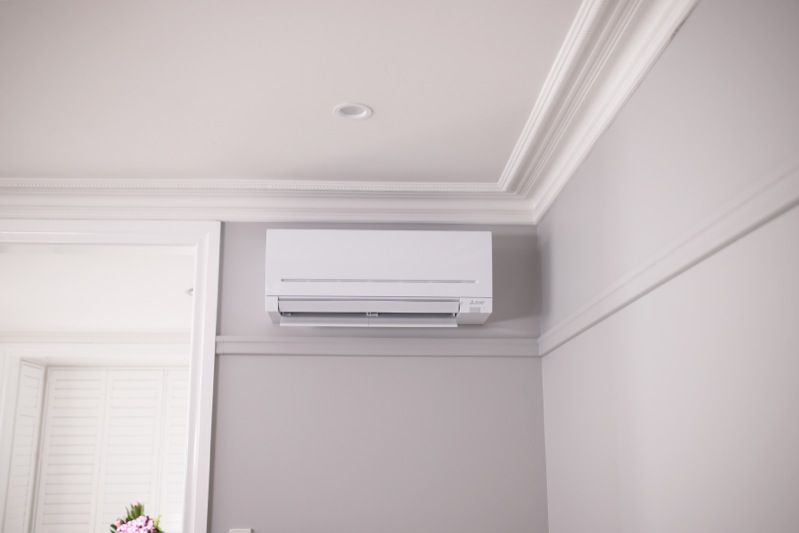What Are The Benefits Of Suspended Ceilings

The ceiling is an essential part of your home’s interior and is as important as the floors or walls, if not more so. While most ceilings in homes and commercial buildings tend to be plain and unremarkable, if done tastefully, they have the potential to dramatically improve the interior aesthetics of a space and become the focal point of any room. More importantly, ceilings are functional, serving as support for your lighting fixtures and hiding away utility lines, insulation, and wiring, which—while important—tend to be visual eyesores.
One ceiling design implementation that has become ubiquitous in commercial spaces is the suspended ceiling. Also referred to as dropped ceiling or false ceiling, suspended ceilings are the visible layer that covers the structural ceiling or the actual roof of the building. They come with a grid system that forms the support structure holding a series of removable square or rectangular panels.
Though you can see this type of ceiling mostly in commercial establishments, the variety of modern suspended ceiling designs make them a good option for residential environments as well. Aside from their clean aesthetics, suspended ceilings provide a number of benefits, which explains why their popularity never really faded since their introduction to modern homes in the 1950s and the 1960s.
Table of Contents
Advantages of a Suspended Ceiling
Fast and Easy Installation
You might be surprised to learn how easy it actually is to install a suspended ceiling compared to conventional drywall ceilings. In fact, weekend warriors sometimes make a DIY project out of it, thanks in no small measure to the availability of complete and ready-to-install suspended ceiling systems. That said, it’s still recommended to leave the installation job to professionals to ensure your safety and the best possible outcome for your project.
Hides Unsightly Utility Lines and Structural Elements
Think of your suspended ceiling as the skin that hides the building’s internal organs. This is one of the main reasons why this type of ceiling installation is popular with commercial buildings. With larger establishments having industrial-size plumbing, ducts, and heavy-duty cables, a dropped ceiling is the easiest solution to hide these vital components.
Ease of Access for Maintenance and Repairs
Another reason why suspended ceilings are great for commercial buildings is the ease of access they provide. If there’s a malfunctioning vent or leaking pipe, all the repair guy needs to do is to pop the tiles up where the pipe or vent is located for servicing and maintenance. Then, as easy as it was to remove the tiles, they can just as easily put the tile or panel back into place. You can’t say the same for conventional ceilings, where the drywall would need to be demolished and replaced.
Reinforced Soundproofing
Suspended ceilings are also sometimes known as “acoustical” ceilings because they have the ability to muffle noises down by up to 50%. They are great for home studios, home theatre rooms, or music rooms since they absorb sound waves instead of having it bounce around the room. When choosing panels specifically for soundproofing, you should pay attention to the Noise Reduction Coefficient (NRC) and Ceiling Attenuation Class (CAC) ratings.
- NCR – NCR is the rate that denotes the sound absorption quality of a material. It can be represented by percentage or decimal, with 1 (100%) representing perfect absorption while 0 (0%) represents perfect reflection.
- CAC – Meanwhile, the Ceiling Attenuation Class rating refers to the transmission of sound from one room to the next and is relevant for offices where the privacy of conversations is critical. Examples of such settings are offices for doctors, legal counsels, and law enforcers. The higher the value, the greater is the reduction of transmission. For example, a CAC score of 35 is excellent, delivering more than adequate sound dampening.
Easy Light Fixture Installation
If you think you can’t possibly install a chandelier or a ceiling fan with a dropped ceiling, you’d be mistaken. Dropped ceilings are made to be compatible with almost all types of ceiling fixtures, but most especially recessed lighting. For heavier fixtures like ceiling fans and chandeliers, you can actually use the structural ceiling for support and simply cut a hole on the panel to let the chain support through. The decorative and lightweight moulding that comes with the fixtures can then be attached to the panel to create the illusion that the panel is holding the weight of the chandelier or fan.
Available in a Variety of Styles and Designs
One common misconception about dropped ceilings or suspended ceiling is that it only comes in white 2-foot x 2-foot panels—the type that you find in plain-looking offices. That couldn’t be farther from the truth. These days, there are a variety of suspended ceiling materials, styles, and designs that barely resemble the traditional dropped ceilings you are familiar with. Some even look like luxurious coffered ceilings you find in Italian mansions, while others appear like a typical drywall because of the hidden grids and seamless design. Structurally, suspended ceilings can be classified as:
- Panels and Tiles – These are the typical ceilings you find in most commercial offices and establishment. With this type of ceiling, the grid support is clearly visible, providing a clean finish to the panels.
- Hidden Grids – The suspended ceilings’ aesthetic appeal is elevated with concealed grid lines. It allows for a various number of styles that are applicable for both home and commercial applications.
- Stretch Ceilings – This type of dropped ceiling consists of a perimeter frame that stretches materials made of vinyl, ornamental fabric, or wooden veneer. The installation takes mere minutes for a small room and produces a variety of stylish finishes. For example, a shiny vinyl material will appear as a super glossy ceiling once the material is fully stretched across the room.
Mould- and Mildew-Resistant
Most suspended ceiling tiles and panels are engineered to prevent moisture absorption, making them mould- and mildew-resistant. Some are made from non-organic materials such as metal and mineral wool that’s suitable for bathroom ceilings. Meanwhile, extremely hygienic rooms like laboratories, clean rooms, and health care facilities can install anti-microbial ceiling panels that are treated specifically to actively resist mould and mildew infestations.
Gone are when suspended ceilings ate up too much ceiling heights and were the staple of every dingy and dreary office ever created by humankind. With newer models and a variety of stylish options available today, dropped ceilings are certainly making a comeback—and not just in the realm of commercial renovations but also of home improvements. Check out this ceiling option today, and find out if it’s the right fit for your interiors.





